July 10th, 2018
Fumiyasu Hirashita
Abstract
It was pointed out that various experiential learning activities in childhood is important, and many children engage in natural experiences, cultural experiences, and social experiences, etc. in various places including youth education facilities.
In this paper, based on the New Course of Studies for Schools (promulgated on 31 March 2017), these activities are organized systematically and comprehensively, and “Bird's-eye view of the experiential learning activities for elementary and lower secondary school students” is shown. Based on it, taking into account the economic burden, etc., experiential learning activities to encourage children to do is shown as “Experiential learning activity map for elementary and lower secondary school students.” It is expected to provide many opportunities for children to experience various learning activities at school, at home, in the community, or youth education facilities by referring to the map of experiential learning activities,
What are experiential learning activities?
What are experiential learning activities? What are nature experiences, cultural experiences, and social experiences? Each person seems to have an image of each of the experiences. In this context, this paper organizes and examines various experiential learning activities systematically and comprehensively, so that many people can understand them.
Some of experiential learning activities are carried out on a daily basis in the course of school education, while others are carried out based on the interests of children in the family or in the local community. Such experiential learning activities are conducted with their friends or siblings, and some learning activities are carried out alone.
As a means of showing the overall picture of experiential learning activities, this paper examines Course of Studies for Schools of Japan, which affects many of the learning activities of children. Since Courses of Studies for Schools are created by many specialists, and have been revised over time, and have been implemented for long periods of time in the field of school, it is considered to be an extremely important reference in considering experiential learning activities.
Considering experiential learning activities based on Courses of Studies for Schools
The following describes the texts which are related to the experiential learning activities in the New Course of Studies for Schools (promulgated on 31 March 2017). Based on these, this paper lists what can be considered as a wide range of experiential learning activities including, those conducted in schools.
Reading
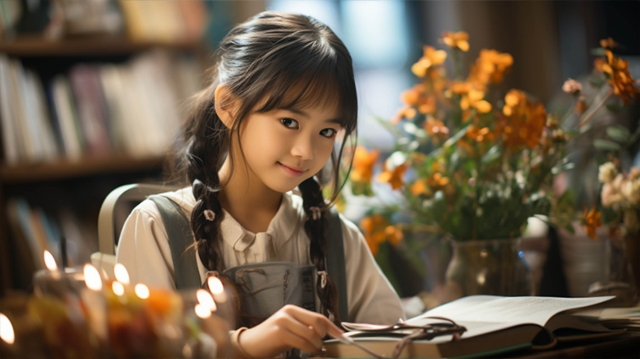
Elementary School Japanese Language Grade 1 and Grade 2
“To develop an attitude in which pupils can feel the goodness of words, enjoy reading and respecting Japanese language, and convey pupils’ thoughts”
“To be familiar with the traditional Japanese language culture by listening to stories such as folktales and myths/legends”
Elementary School Japanese Language Grade 3 and Grade 4
“To be aware of the goodness of words, and to develop an attitude in which pupils can read various books, respect Japanese language, and convey pupils’ thoughts”
“To realize that reading is useful for getting the knowledge and information by reading various books”
Elementary School Japanese Language Grade 5 and Grade 6
“To recognize the goodness of words and to develop an attitude in which pupils can read books willingly, aware the importance of Japanese language, and convey pupils’ thoughts”
“Activities to read poems, stories or biographies, explain the contents of the books, and communicate thoughts about how to live”
“Activities to report what pupils investigate or thought about by reading books and newspapers in the school library”
The experiential learning activities in the reading field are considered as follows;
(1) To read books of various genres such as literature, history, biography, folktale, travel, geography, society, and science, using a library
(2) To read newspapers, and magazines
Social Tour
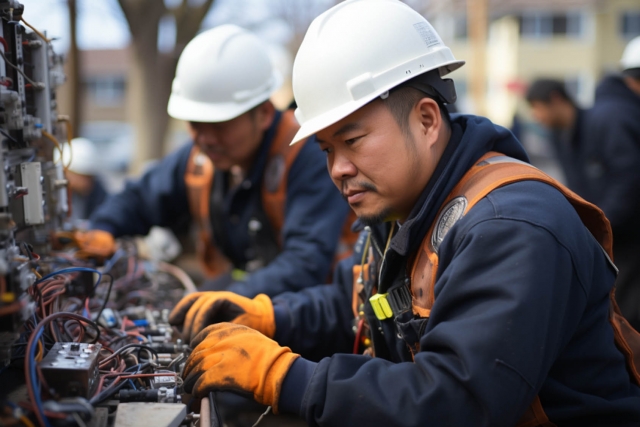
Elementary School Social Studies Grade 3
“The following items should be targeted in the instruction with regard to issues related to the local areas or cities (including wards, towns, villages), in order to enable pupils to acquire, through the activities to investigate and solve the problems of learning;
(1) To acquire knowledge and skills as follows;
(a) To roughly understand the situation of the local areas or cities
(b) To observe, inspect or examine the materials such as maps, and to summarize in a blank map, etc.
(2) To acquire the following thinking ability, judgment, expressive power, etc.;
(a) Through paying attention to the location of the city in the prefecture, the city topography, the land use, the extent of the traffic, the location and work of main public facilities such as a city hall, the distribution of buildings which remain from old times, etc., to grasp the situation of local communities or cities, and consider the differences by the location. and express”
“The following items should be targeted in the instruction with regard to issues related to the productions and sales of local people, in order to enable pupils to acquire, through the activities to investigate and solve the problems of learning;
(1) To acquire knowledge and skills as follows;
(a) To understand that the job of production is closely related to the lives of local people
(b) To understand that the sales work is done to increase sales based on the diverse wishes of consumers
(c) To visit, inspect or examine the materials such as maps, and to summarize in a blank map, etc.”
“With regard to (a), as an example, it should be selected from among farmers, factories, etc.”
“With regard to (b), to take up the shops, and when dealing with ‘relationships with other countries,’ to check the names and locations of prefectures and countries using a map book, etc.”
“The following items should be targeted in the instruction with regard to the work to protect the safety of the community, in order to enable pupils to acquire, through the activities to investigate and solve the problems of learning;
(1) To acquire knowledge and skills as follows;
(a) To understand that the related organizations such as the fire and police departments, has been cooperating in dealing with emergencies in order to protect the local community, and that the related organizations, in cooperation with the people of the region, has been making efforts to avoid hazards such as fire and accident
(b) To visit, inspect or examine the materials such as maps, and to summarize”
“Regarding ‘cooperating in dealing with emergencies’ and ‘making efforts to avoid hazards,’ the fire and the accident should be all covered. In this case, effective guidance such as placing emphasis on either side should be devised.”
Elementary School Social Studies Grade 4
“The following items should be targeted in the instruction with regard to the projects that support people's health and living environment, in order to enable pupils to acquire, through the activities to investigate and solve the problems of learning;
(1) To acquire knowledge and skills as follows;
(a) To understand that the projects to supply drinking water, electricity, and gas are working to be provided safely and stably, and that the projects contribute to the maintenance and improvement of healthy lives of local people
(b) To understand that the projects of waste disposal are working in order to enable hygienic processing and effective use of resources, and that the projects contribute to the maintenance and improvement of living environments
(c) To visit, inspect or examine the materials such as maps, and to summarize”
“To select from drinking water, electricity and gas”
“To select either waste or sewage”
“The following items should be targeted in the instruction with regard to the activities that protect people from natural disasters, in order to enable pupils to acquire, through the activities to investigate and solve the problems of learning;
(1) To acquire knowledge and skills as follows;
(a) To understand that the related organizations and people of the region have cooperated in various ways and have been dealing with natural disasters, and to understand that they are making a variety of preparations for future disasters
(b) To interview, to examine the materials such as maps and chronological tables, and to summarize”
“With regard to (a), to select what occurred in the prefecture in the past, from among earthquakes, tsunamis, floods, volcanic disasters, snow disasters”
“With regard to “related organizations" of (a), to take up with a central focus the functions of the prefectural government or the city hall, and to take up matters of sending disaster prevention information, ensuring the evacuation system, and relationship with government organizations such as the Self-Defense Forces”
“The following items should be targeted in the instruction with regard to the tradition and culture of the prefecture, the work of our predecessors, in order to enable pupils to acquire, through the activities to investigate and solve the problems of learning;
(1) To acquire knowledge and skills as follows;
(a) To understand that the cultural properties and annual events in the prefecture are inherited by local people, and to understand that these include the various wishes of people, such as regional development
(b) To understand that our predecessors who developed the local communities contribute to the improvement of people's life at that time by various pains and effort
(c) To visit, inspect or examine the materials such as maps, and to summarize in a chronology table, etc.”
Elementary School Social Studies Grade 5
“The following items should be targeted in the instruction with regard to the food production in agriculture and fisheries in Japan, in order to enable pupils to acquire, through the activities to investigate and solve the problems of learning;
(1) To acquire knowledge and skills as follows;
(a) To understand that the food production in Japan is based on natural conditions and that it plays an important role in the food security of the people
(b) To understand that people involved in food production are supporting food production by making efforts to improve productivity and quality, devise ways to transport and sell, and deliver quality food to their consuming areas.
(c) To examine in a map, globe, or various materials, and summarize”
“It should be examined through concrete examples of agricultural and fishery industries. One of the productions of vegetables, fruits, livestock products and fishery products is to be taken up in addition to rice cultivation.”
“The following items should be targeted in the instruction with regard to the industrial production in Japan, in order to enable pupils to acquire, through the activities to investigate and solve the problems of learning;
(1) To acquire knowledge and skills as follows;
(a) To understand that various industrial production is carried out in Japan, and that the thriving areas of the industry are spreading, and that industrial products play an important role in improving the lives of people
(b) To understand that people involved in industrial production are supporting industrial food production, and in response to the demand and social changes of the consumer, they are making various efforts and efforts to produce superior products
(c) To understand that trade and transportation play an important role in supporting industrial production in securing raw materials and selling products
(d) To examine in a map, globe, or various materials, and summarize”
“It should be examined through concrete examples of industrial areas. One of them should be taken from the metal industry, the machinery industry, the petrochemical industry, the food industry, etc.”
“The following items should be targeted in the instruction with regard to the relationship between Industry and Information in Japan, in order to enable pupils to acquire, through the activities to investigate and solve the problems of learning;
(1) To acquire knowledge and skills as follows;
(a) To understand that industries such as broadcasting and newspapers have a major impact on people's lives
(b) To understand that the use of large amounts of information and information communications technology has developed a variety of industries and has improved the lives of people
(c) To conduct interviews or examine various materials such as images and newspapers, and summarize”
“With regard to ‘industries such as broadcasting and newspapers,’ to select from among them. In this case, to realize that on the issue of making effective use of information, it is important to consider to it from the sender and the receiver, and to judge correctly as a receiver and to have responsibility as a sender.”
The experiential learning activities in the social tour field are considered as follows;
(1) To participate in a plant tour (food, beverage, automobile, cosmetic, etc.), a facility tour (water purification, power, gas, garbage disposal, research, inspection, etc.), a studio tour (traditional crafts, arts, etc.), an office tour (newspaper, TV, IT, trade, etc.), or to visit the workplace where the parent works
(2) To go to a vocational experience facility, or if the house is a shop, factory, to help it
Agriculture, forestry and fisheries industry experience
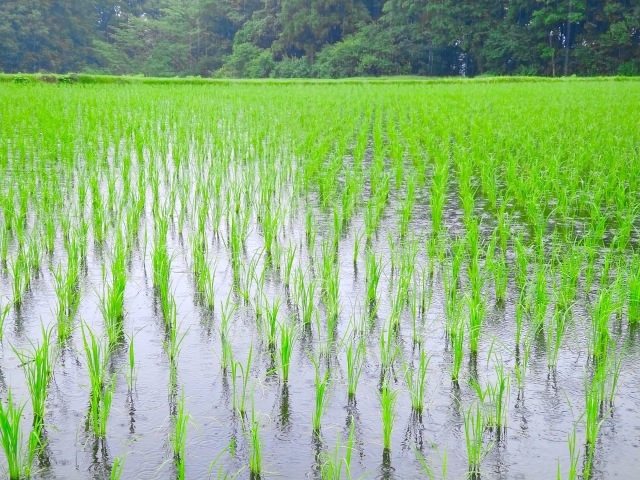
The experiential learning activities in the agriculture, forestry and fisheries industry experience field are considered as follows;
(1) To participate in an agriculture (cultivation of rice or vegetables, picking of mandarin orange or sweet potato, dairy farming, etc.), forestry (tree planting, thinning, weeding, charcoal, etc.) and fisheries industry (seining, dried fish, etc.) experiential activity
(2) If the house is engaged in agriculture, forestry, and fisheries, to help it
History
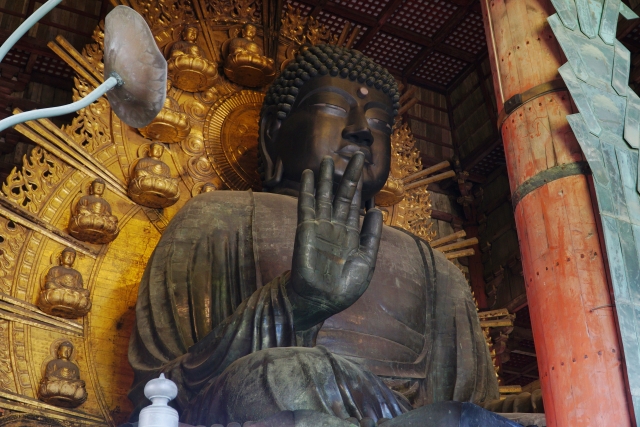
Elementary School Social Studies Grade 6
“The following items should be targeted in the instruction with regard to major events in the history of Japan, in order to enable pupils to acquire, through the activities to investigate and solve the problems of learning;
(1) To acquire knowledge and skills as follows, and in this case, to understand the rough history through main events in the history of Japan, and to understand the performance of related predecessors and excellent cultural heritages”
“To use the facilities such as museums, and to investigate the ruins and cultural properties in local communities or in the country. Moreover, to collaborate with experts and related persons and organizations”
Lower Secondary School Social Studies (History)
“Regarding the lives of Japanese people and the culture rooted in life, to give guidance in relation to political movements, social movements, geographical conditions, and the history of local communities” “To enable students to learn more concretely through the utilization of the results of folklore and archaeology, and through visiting and investigating facilities such as museums and folk museums”
The experiential learning activities in the history field are considered as follows;
(1) To visit shrines, temples, castles, historical buildings, world cultural heritages, ruins, museums, folk museums, and archives
(2) To listening to old stories from grandparents and elderly people in the local community
(3) To watch movies and videos, on the theme of history.
Animal

Elementary School Living Environment Studies Grade 1 and Grade 2
“To enable pupils to become interested in the habitat of animals and plants, and their changes and growth through raising and growing them, to realize that they are living and growing, to be familiar with living things, and to be able to cherish them”
The experiential learning activities in the animal field are considered as follows;
(1) To see or observe a variety of animals in a zoo, a ranch, an aquarium, a sea, a river, a pond, a forest, etc.
For example, mammal (monkey, dog, cat, bear, lion, tiger, elephant, horse, cow, hippopotamus, deer, giraffe, pig, sheep, mouse, rabbit, dolphin, etc.), amphibian and reptile (frog, turtle, snake, etc.), fish (salmon, crucian carp, eel, carp, goldfish, shark, tuna, sea bream, flounder, snail, common orient clam, asari clam, sea anemone, coral, jellyfish, octopus, hermit crab, starfish, sea cucumber, etc.), bird (crow, sparrow, canary, Japanese bush warbler, swallow, owl, parrot, pigeon, sea gull, crane, peacock, chicken, eagle, swan, duck, penguin, ostrich, etc.)
(2) To breed small animals (dog, cat, hamster, etc.) and goldfishes
Insect
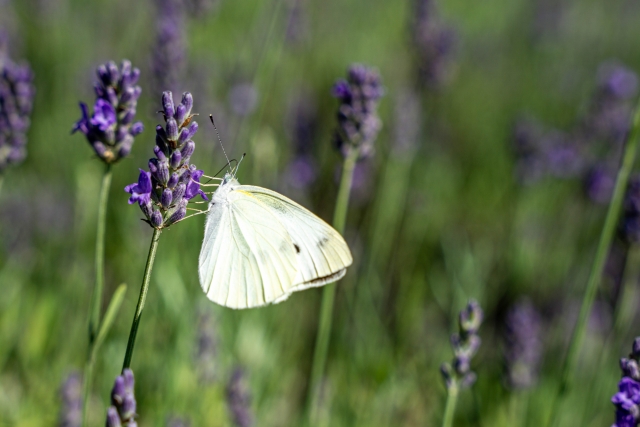
Elementary School Science Grade 3
“To understand the followings and to acquire skills related to observation, experimentation, etc.;
(b) The insect grows in a certain order, and the adult's body consists of the head, chest, and abdomen.
(c) The plant grows in a certain order, and its body consists of roots, stems and leaves.”
Elementary School Science Grade 4
“Regarding familiar animals and plants, by finding and raising them, with attention to animal activities and plant growth and seasonal changes, through a measure related to them, to enable pupils to acquire the following abilities;”
The experiential learning activities in the insect field are considered as follows;
To go to a park, a field, a riverside, a pond, a forest, a firm, etc. and find and observe various insects or breed them
For example, butterfly, dragonfly, bee, ant, beetle, stag beetle, scarabaeid beetle, diving beetle, firefly, ladybug, longhorn beetle, shield bug, cicada, grasshopper, Japanese katydid, cricket, bell cricket, and praying mantis
Plant

The experiential learning activities in the plant field are considered as follows;
To go to a park, a mountain, a field, a riverside, a pond, a forest, a firm, a botanical garden, etc. and find and observe various plants or grow them
For example, tree (ginkgo tree, Japanese cedar, pine, willow, sawtooth oak, Japanese zelkova, hydrangea, cherry tree, Japanese plum tree, rose, maple, Japanese camellia, azalea, palm tree, bamboo, etc.), flower and wild grass (pansy, iris, narcissus, hyacinth, tulip, sunflower, morning glory, lily, marigold, cosmos, salvia, chrysanthemum, cactus, fringed pink, water lily, brassicaceae, dandelion, violet, plantago, Japanese pampas grass, cluster amaryllis, etc.), alpine plant (dicentra, skunk cabbage, etc.), vegetable, fruit, and nut (cabbage, onion, Japanese radish, potato, tomato, corn, rice, watermelon, mandarin orange, apple, grape, persimmon, chestnut, acorn, pinecone, etc.), fern (royal fern, bracken, etc.), moss (liverwort, sphagnum, etc.)
Star

Elementary School Science Grade 4
“Regarding the features of the moon and stars, with attention to the changes in the position and the passage of time, through a measure related to them, to enable pupils to acquire the following abilities;”
The experiential learning activities in the star field are considered as follows;
To go to a mountain, a highland, etc. and look at or observe the stars which are spread all over the night sky
In particular, to find the following representative constellations and stars;
The Milky Way, Polaris, the Big Dipper, Cassiopeia, Summer Triangle (Vega in Lyra, Altair in Aquila, Deneb in Cygnus), Antares in Scorpius, Winter Triangle (Procyon in Canis Minor, Sirius in Canis Major, Betelgeuse in Orion), Rigel in Orion, Orion Nebula, and the Pleiades
Music
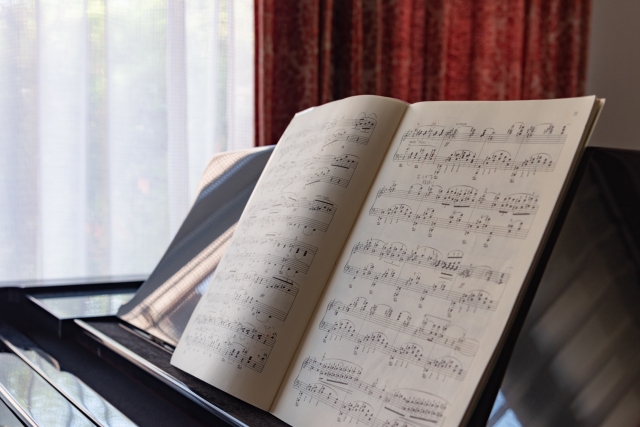
Elementary School Music (Common Materials)
Grade 1 “Umi (Sea)” “Katatsumuri (Snail)” “Hi no Maru (Japanese Flag)” “Hiraita, Hiraita (Opened, Opened)”
Grade 2 “Kakurenbo (Hide-and-Seek)” “Haru ga Kita (Spring Has Come)” “Mushi no Koe (Sound of Insects)” “Yuyake, Koyake (Afterglow of Sunset)”
Grade 3 “Usagi (Rabbit)” “Chatsumi (Tea Picking)” “Haru no Ogawa (Stream in the Spring)” “Fujisan (Mt.Fuji)”
Grade 4 “Sakura Sakura (Cherry Blossoms)” “Tonbi (Black Kite)” “Makiba no Asa (Morning in the Pasture)” “Momiji (Maple)”
Grade 5 “Koinobori (Carp Streamer)” “Komoriuta (Lullaby)” “Ski no Uta (Skiing Song)” “Fuyu-Geshiki (Winter Scenery)”
Grade 6 “Etenraku-Imayo (a piece of Gagaku, traditional form of music in Japan) (as far as the second verse of the lyrics)” “Oborozukikyo (Misty Moonlit Night)” “Furusato (My Country Home)” “Ware wa Uminoko (I Am a Child of the Sea) (as far as the third verse of the lyrics)”
Lower Secondary School Music (Common Materials)
“Akatonbo (Red Dragonflies)” “Kojo no Tsuki (Moon over the Ruined Castle)” “Soshunfu (An Ode to Springtime)” “Natsu no Omoide (Summer Memories)” “Hana (Flowers)” “Hana no Machi (City of Flowers)” “Hamabe no Uta (Song of the Seashore)” “Kakurenbo (Hide-and-Seek)” “Haru ga Kita (Spring Has Come)” “Mushi no Koe (Sound of Insects)” “Yuyake, Koyake (Afterglow of Sunset)”
The experiential learning activities in the music field are considered as follows;
(1) To sing together, play, or listen to a variety of songs which have been sung as follows;
“Umi (Sea)” “Katatsumuri (Snail)” “Hi no Maru (Japanese Flag)” “Hiraita, Hiraita (Opened, Opened)” “Kakurenbo (Hide-and-Seek)” “Haru ga Kita (Spring Has Come)” “Mushi no Koe (Sound of Insects)” “Yuyake, Koyake (Afterglow of Sunset)”“Usagi (Rabbit)” “Chatsumi (Tea Picking)” “Haru no Ogawa (Stream in the Spring)” “Fujisan (Mt.Fuji)” “Sakura Sakura (Cherry Blossoms)” “Tonbi (Black Kite)” “Makiba no Asa (Morning in the Pasture)” “Momiji (Maple)” “Koinobori (Carp Streamer)” “Komoriuta (Lullaby)” “Ski no Uta (Skiing Song)” “Fuyu-Geshiki (Winter Scenery)” “Etenraku-Imayo (a piece of Gagaku, traditional form of music in Japan)” “Oborozukikyo (Misty Moonlit Night)” “Furusato (My Country Home)” “Ware wa Uminoko (I Am a Child of the Sea)” “Akatonbo (Red Dragonflies)” “Kojo no Tsuki (Moon over the Ruined Castle)” “Soshunfu (An Ode to Springtime)” “Natsu no Omoide (Summer Memories)” “Hana (Flowers)” “Hana no Machi (City of Flowers)” “Hamabe no Uta (Song of the Seashore)” “Kakurenbo (Hide-and-Seek)” “Haru ga Kita (Spring Has Come)” “Mushi no Koe (Sound of Insects)” “Yuyake, Koyake (Afterglow of Sunset)” “Kokyo no Sora (Comin thro' the Rye)” “Hanyu no Yado (Home, Sweet Home)” “Ryoshu (Dreaming of Home and Mother)” “Nobara (Heidenröslein)” “Biwako Shuko no Uta (Lake Biwa Rowing Song)” “Dokokade Haruga (Feel Spring Somewhere)” “Pechika (Russian Stove)” “Yashi no Mi (Coconut)” “Troika”
(2) To sing, play, or listen to other various genres of music (folk song, lullaby, children's song, popular music, movie music, classic, jazz, samba, etc.)
(3) To go to a music class such as a piano class and a violin class
Art and Handicraft
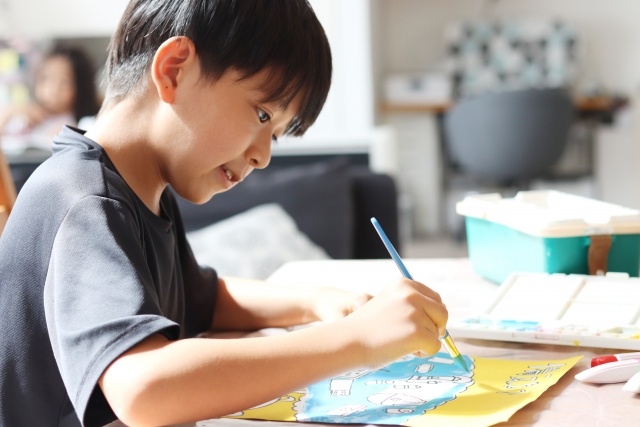
Elementary School Art and Handicraft Grade 1 and Grade 2
“Guidance in the following matters concerning ideas and concepts takes place, in order to enable pupils to acquire, through the activities of expression;
(a) Through artistic play activities, based on the shapes and colors of familiar natural objects or artificial materials, to come up with the artistic activities, or to think about how to work while activating pupils’ sensations and feelings
(b) Through activities to express in the form of a drawing or painting, a three-dimensional artifact or some other kind of handicraft, to find what pupils feel, what they imagine, and how to express, and to think about how to express by imaging a variety of shapes and colors”
Elementary School Art and Handicraft Grade 3 and Grade 4
“Guidance in the following matters concerning ideas and concepts takes place, in order to enable pupils to acquire, through the activities of expression;
(a) Through artistic play activities, on the basis of familiar materials or a familiar location, to come up with creative activities, and to think about how to work while thinking about new shapes and colors
(b) Through activities to express in the form of a drawing or painting, a three-dimensional artifact or some other kind of handicraft, to identify what it is that is to be expressed on the basis of what has been felt, imagined or seen, and to think about how to express by means of utilizing shapes, colors and materials, while thinking about what is to be expressed and what its function will be”
“Guidance in the following matters concerning skills takes place, in order to enable pupils to acquire, through the activities of expression;
(a) Through artistic play activities, to deal with materials and tools properly, and to creating something by means of such actions as fitting things of different shapes together, cutting, joining shapes, or changing one shape into another, while utilizing the experience of materials and tools gained in the lower grades
(b) Through activities to express in the form of a drawing or painting, a three-dimensional artifact or some other kind of handicraft, to deal with materials and tools properly, and to carry out the act of expression with ingenuity, in line with what is to be expressed, by using the hands and the whole body, while utilizing the experience of materials and tools gained in the lower grades”
Elementary School Art and Handicraft Grade 5 and Grade 6
“Guidance in the following matters concerning ideas and concepts takes place, in order to enable pupils to acquire, through the activities of expression;
(a) Through artistic play activities, on the basis of the characteristic features of materials, a location and space, to come up with a creative activity, and to think about how to work while configuring or considering the surrounding situation
(b) Through activities to express in the form of a drawing or painting, a three-dimensional artifact or some other kind of handicraft, to find out what pupils want to express, from what they feel, what one has seen, imagined or felt, and would like to express to other, and to think about how to express the subject by means of utilizing shapes, colors, characteristics of the material, the beauty of the composition, and application”
“Guidance in the following matters concerning skills takes place, in order to enable pupils to acquire, through the activities of expression;
(a) Through artistic play activities, to use materials and tools according to activities, and to carry out the act of expression with ingenuity, by utilizing in a comprehensive way the skills and experience gained in previous grades with respect to materials and tools or by combining appropriate methods
(b) Through activities to express in the form of a drawing or painting, a three-dimensional artifact or some other kind of handicraft, to utilize materials and tools in accordance with the expression method, and to carry out the act of expression with ingenuity, in line with what is to be expressed, by utilizing in a comprehensive way the skills and experience gained in previous grades with respect to materials and tools or by combining appropriate methods of expression
Elementary School Art and Handicraft Common matters
“Materials and tools should be handled as follows. As and when necessary, they can be used in an introductory way in the preceding grades, and used by way of repetition in the succeeding grades;
(a) In Grade 1 and Grade 2, familiar and easy-to-handle materials and tools should be used, such as soil, clay, wood, paper, crayons, pastel crayons, scissors, glue, a simple, small knife.
(b) In Grade 3 and Grade 4, the materials and tools should be used such as pieces of wood, wooden boards, nails, watercolor paints, small knives, an easy-to-use saw, a hammer.
(c) In Grade 5 and Grade 6, the materials and tools should be used, such as wire and a coping saw.”
Lower Secondary School Technology and Home Economics (Technology)
“The following items should be targeted in the instruction with regard to issues related to life and society, in order to enable pupils to acquire, through activities to solve by techniques of material and processing;
(a) To be able to make a picture necessary for production and to be able to produce something safety and properly or to inspect it
(b) To find and set up the problem and to embody the design, devising methods of material selection and formation, and to think about the process of manufacture, evaluation of results, improvement and correction
The experiential learning activities in the art and handicraft field are considered as follows;
(1) To draw or paint pictures, and make handicrafts (knit, lace, embroidery, quilt, stuffed toy, dyeing, origami, dried flower, leather craft, woodwork, pottery, sculpture, etc.)
(2) To go to a painting class, a handicraft class, a woodwork class, a pottery class, and a carving class
Family Life
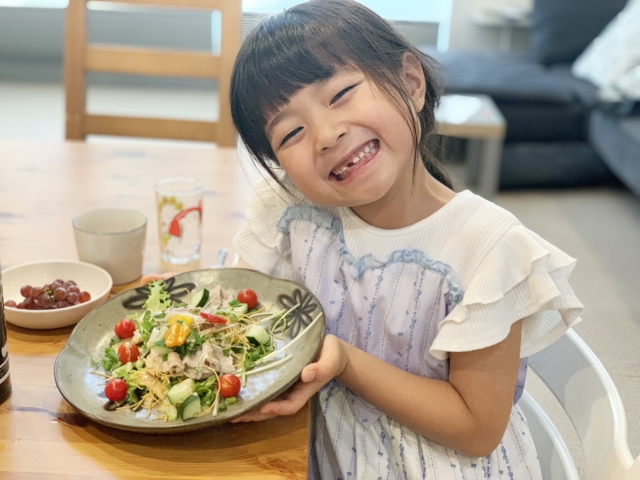
Elementary School Home Economics Grade 5 and Grade 6
“The following items should be targeted in the instruction, in order to enable pupils to acquire, with respect to the items of the next (1) to (4), by being aware of the issues, being in cooperation with the people of the family and community, considering towards a better family life, and through creative activities;
(2)Home life and work
(a) To understand that there are household chores and pupils must share them for a happy home and use their time effectively so that they can create time
(b) To consider the plan of housework and carry out with ingenuity”
“To acquire knowledge and skills as follows;
(a) To understand the appropriate amount of necessary ingredients and cooking procedures and cooking plans
(b) To understand how to make safe and sanitary use of kitchen utensils, tableware and heating cookers and to be able to use appropriately
(c) To understand how to wash according to ingredients, cut suitable for cooking and give flavor to ingredients, serve meals, and set or clear the table and kitchen sink, and to be able to carry out appropriately
(d) To understand how to cook by boiling and stir-frying suitable for cooking, and to be able to carry out appropriately
(e) To understand how to cook rice and miso (soybean paste) soup, which are traditional daily food, and to carry out appropriately “
“To acquire knowledge and skills as follows;
(a) To understand how to wear their everyday clothes in a comfortable manner, according to the season and circumstances, with the knowledge of the function of clothes
(b) To understand how to sew buttons or do laundry with the understanding that everyday clothes need attention and to be able to carry out appropriately”
“To acquire knowledge and skills as follows;
(a) To understand the main work of the house, the importance of living in accordance with the cycle of the seasons, and their housing
(b) To understand ways to tidy up and clean their house and to be able to carry out appropriately”
“To acquire knowledge and skills as follows;
(a) To understand the materials and procedures necessary for production and understand the production plan.
(b) To understand the appropriate methods of sewing, such as sewing by hand or with a sewing machine for small items and to understand the safe use of tools necessary for making small items, and to be able to carry out appropriately”
“To decide what to make with a piece of cloth to enrich life, and carry out with ingenuity”
“To acquire knowledge and skills as follows;
(a) To understand the mechanics of shopping and the role of consumers, and to understand the importance of goods and money and ways to use them in a planned manner
(b) To understand ways to select everyday goods and buy them, and to collect and organize the information to buy them appropriately”
“To understand ways to select everyday goods and buy them, taking advantage of the information to buy them appropriately
Lower Secondary School Technology and Home Economics (Home Economics)
“To acquire knowledge as follows;
(a) To understand characteristics of child development and their lives, and to understand the role of families as an environment for raising children
(b) To understand the significance of child’s play, and the involvement with children”
“To consider better relationships with children and carry out with ingenuity”
“To acquire knowledge and skills as follows;
(c) To understand the way of heating cooking suitable for the material, and to be able to cook basic daily meals
(d) To understand regional ingredients culture, and to be able to cook appropriately Japanese cuisine, utilizing regional ingredients ”
“Regarding cooking daily one meal, to consider the selection of foods and how to cook, and the cooking plan, and carry out with ingenuity”
“To acquire knowledge and skills as follows;
(a) To understand the connection between clothing and social life, and to understand what to wear according to the purpose and by using one’s individuality, and select it appropriately
(b) To understand the necessity of utilizing clothing in a planned manner, and to understand about taking care of daily wear according to the clothing material and its condition, and carry out appropriately”
“To consider how to select clothing, and how to care for daily wear according to the clothing material and its condition, and carry out appropriately”
“With regard to (a), to touch Japanese traditional clothing. Moreover, basic ways of putting on Japanese clothing can be dealt with. Things to keep in mind regarding the labeling and selection of ready-made clothes should be covered. For (b), caring for daily wear should primarily deal with washing and mending.”
Elementary School Moral Education Grade 1 and Grade 2
“To love and respect parents and grandparents, and to be useful to the family by helping with the housework willingly”“
Elementary School Moral Education Grade 3 and Grade 4
“To touch the people supporting their life such as family and to touch senior citizens who built the current life, with respect and gratitude”
“To love and respect parents and grandparents, and to make a sweet home by cooperating each other”
Elementary School Moral Education Grade 5 and Grade 6
“To love and respect parents and grandparents, and to be useful to the family, for family's happiness”
Lower Secondary School Moral Education
“To love and respect parents and grandparents, and to build a fulfilling family life with awareness as the family's member”
The experiential learning activities in the family life field are considered as follows;
(1) To help with the housework;
For example, cooking, making sweets, shopping, cleaning up, ironing, and sewing, taking care of small children
(2) To visit the grandparents’ house and play with them or talk to them
Traditional Play, Sports and Dance
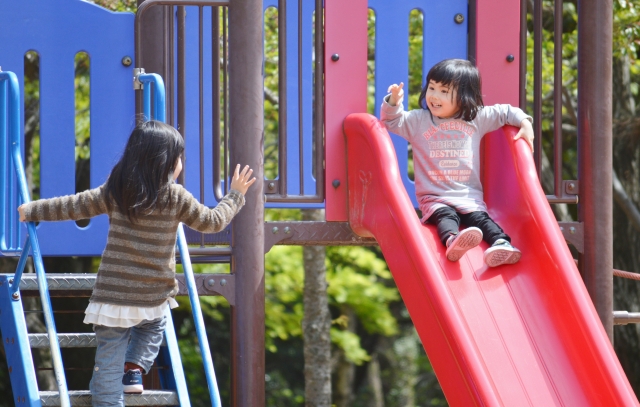
Elementary School Physical Education Grade 1 and Grade 2
Physical Fitness; “Exercises for releasing the body and mind” “Exercises to create various movements”
Play with apparatus and equipment; “Play with fixed facilities” “Play on mats” “Play with horizontal bars” “Play with vaulting box”
Play with Running and Jumping; “Play with Running” “Play with Jumping”
Playing in water; “Playing with moving in the water” “Playing with diving and floating”
Games; “Ball games” “Tag game”
Expression and Rhythm Play; “Expressive play” “Rhythm play”
“In accordance with the circumstances of the school and its local community, some activities may be added, including traditional play involving songs and movements and outdoor activities.”
Elementary School Physical Education Grade 3 and Grade 4
Physical Fitness; “Exercises for releasing the body and mind” “Exercises to create various movements”
Apparatus Gymnastics; “Mat activities” “Horizontal bar activities” “Vaulting box activities”
Running and Jumping; “Running and relay races” “Small hurdle races” “Long jump” “High jump”
Swimming; “Floating and moving activities” “Diving and floating activities”
Games; “Goal-type games” “Net-type games” “Baseball-type games”
Expressive Activity; “Expressive” “Rhythm dances”
“With regard to item (1) in “F: Expressive Activity” of the Content, folk dance may be added to the program in accordance with the circumstances of the school and its local community.”
Elementary School Physical Education Grade 5 and Grade 6
Physical Fitness; “Exercises for releasing body and mind” “Exercises to improve physical fitness”
Apparatus Gymnastics; “Mat activities” “Horizontal bar activities” “Vaulting box activities”
Track and Field; “Short-distance races and relay races” “Hurdle races” “Running long jump” “Running high jump”
Swimming; “Crawl” “Breaststroke”
Ball Games; “Goal-type games” “Net-type games” “Baseball-type games”
Expressive Activity; “Expression” “Folk dance”
“With regard to item (1) in “F: Expressive Activity” of the Content, rhythmic dance may be added to program in accordance with the circumstances of the school and its local community.”
Elementary School Physical Education Common matters
“Snow games, games on ice, skiing, skating and playing on the beach in natural surroundings should be actively taught in accordance with the circumstances of the school and its local community.”
Lower Secondary School Health and Physical Education (Physical Education) Grade 1 and Grade 2
Physical Fitness; “Exercises for releasing body and mind” “Exercises to improve physical fitness”
Apparatus Gymnastics; “Mat activities” “Horizontal bar activities” “Balance beam activities” “Vaulting box activities”
Track and Field; “Short-distance races and relay races” “Long-distance races” “Hurdle races” “Running long jump” “Running high jump”
Swimming; “Crawl” “Breaststroke” “Backstroke” “Butterfly”
Ball Games; “Goal-type games” “Net-type games” “Baseball-type games”
Budo; “Judo” “Kendo” “Sumo”
Dance; “Creative dance” “Folk dance” “Contemporary rhythmic dance”
Lower Secondary School Health and Physical Education (Physical Education) Grade 3
Physical Fitness; “Exercises for releasing body and mind” “Exercises for real life”
Apparatus Gymnastics; “Mat activities” “Horizontal bar activities” “Balance beam activities” “Vaulting box activities”
Track and Field; “Short-distance races and relay races” “Long-distance races” “Hurdle races” “Running long jump” “Running high jump”
Swimming; “Crawl” “Breaststroke” “Backstroke” “Butterfly”
Ball Games; “Goal-type games” “Net-type games” “Baseball-type games”
Budo; “Judo” “Kendo” “Sumo”
Dance; “Creative dance” “Folk dance” “Contemporary rhythmic dance”
Lower Secondary School Health and Physical Education (Physical Education) Common matters
“For Grade 3 all of the students should take “A. Physical Fitness” and “H. Theory of Sport and Physical Education.” One or more should be chosen from out of “B. Apparatus Gymnastics,” “C. Track and Field,” “D. Swimming,” and “G. Dance,” as well as one or more from among “E. Ball Games” and “F. Budo,” respectively, in order to allow the students to take these subjects.”
“With regard to “F. Budo,” to touch more Japan's unique traditions and culture, through judo, kendo, sumo, karate, naginata, Japanese archery, aikido, shorinji kempo, jukendo, etc. With regard to the exercises in (1), one item should be selected from between (a) and (c) to allow the students to take said item. It is possible to have the students engage in other types of budo, such as karate, naginata, Japanese archery, aikido, shorinji kenpo, jukendo, etc. in accordance with the circumstances of the region and the school. In addition, in the event that it is difficult to ensure a budo area then this is to be carried out by devising instructional methods. What is more, due consideration is to be paid to ensuring safety, such as by providing instruction in a phased manner based on the students’ learning stage and individual differences.”
“With regard to instruction on skiing, skating, waterside activities and other activities that have a deep connection with nature, attention should be paid to conducting these in accordance with the circumstances of the region and school.”
The experiential learning activities in the traditional play, sports and dance field are considered as follows;
(1) To play various traditional games (tag, kick the can, hide-and-seek, oshikura manju, throwing stones, stilts, spinning top, soap bubble, tiddlywinks, beanbag, etc.), or to play various sports (baseball, soccer, swimming, skating, judo, karate, kendo, etc.)
(2) To ride a bicycle, to do jump rope, or to play on a seesaw and a swing
(3) To go to a baseball class, a soccer class, a swimming class, a skating class, a judo class, a karate class, a kendo class, and a dance class
Health
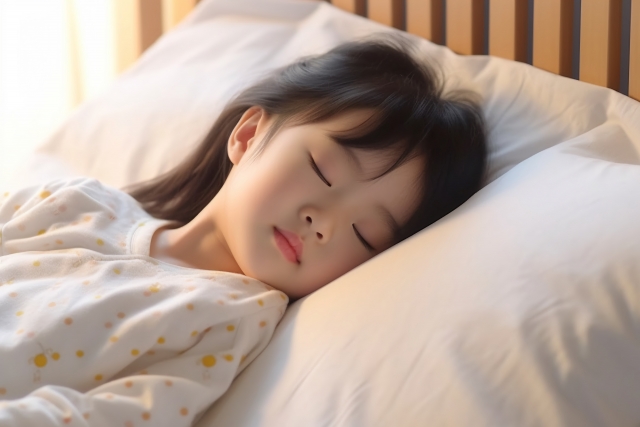
Elementary School Physical Education (Health) Grade 3 and Grade 4
“To understand the healthy way of life
(a) Healthy conditions, such as sound mental and physical conditions, are related to the factors of the host itself and those of the surrounding environment.
(b) In order to lead a healthy life, it is necessary to maintain personal hygiene in addition to a well-balanced lifestyle in terms of exercise, diet, rest and sleep.
(c) It is necessary to maintain a good living environment, including having appropriate lighting and ventilation, in order to lead a healthy life.”
Elementary School Physical Education (Health) Grade 5 and Grade 6
“To understand mental development and to understand coping with worry and anxiety, and to deal with the basic method
(a) The mind develops with age through various life experiences.
(b) The body and mind influence each other.
(c) There are various ways to cope with worry and anxiety, such as consulting adults and/or friends, playing with friends, doing exercise. “
Lower Secondary School Health and Physical Education (Health)
“A well-balanced lifestyle in terms of exercise, diet, rest, and sleep at a level appropriate for age and living environment must be continued in order to maintain and improve health.”
“An unhealthy lifestyle, including insufficient exercise, imbalances in the amount and quality of food, and a lack of rest and sleep, produce disease such as lifestyle-related diseases. Much of lifestyle-related disease can be prevented by practicing the life which could work in a well-balanced lifestyle in terms of exercise, diet, rest, and sleep.”
The experiential learning activities in the health field are considered as follows;
(1) In order to maintain and improve the health, on a daily basis, to practice a well-balanced lifestyle in terms of proper exercise, diet, rest and sleep
(2) To acquire the lifestyle habits such as paying attention to the amount of the daily food and the balance of nutrients, and maintaining the hygiene of the mouth.
International Exchange

Elementary School Foreign Language Activities Grade 3 and Grade 4
“To become familiar with the sounds and rhythms of English, to learn its differences from the Japanese language, and to be aware of the interesting aspects of language and its richness”
“To learn the differences in ways of living, customs and events between Japan and foreign countries and to be aware of various ways of thinking“
“To experience communication with people of different cultures and to deepen the understanding of culture”
Elementary School the Period for Integrated Studies
“Issues to be explored, which is suitable to achieve the objectives should be set in the light of the conditions of each school: for example, cross-synthetic tasks which correspond to the contemporary issues, including international understanding, information, environment, welfare/health, tasks depending on characteristics of the local community and the school such as people’s lives, traditions and culture of the local community, and tasks based on pupils’ interests and concerns.”
Lower Secondary School the Period for Integrated Studies
“Issues to be explored, which is suitable to achieve the objectives should be set in the light of the conditions of each school: for example, cross-synthetic tasks which correspond to the contemporary issues, including international understanding, information, environment, welfare/health, tasks depending on characteristics of the local community and the school, tasks based on pupils’ interests and concerns, and tasks concerning occupation and their own futures.”
The experiential learning activities in the international exchange field are considered as follows;
To participate in an international exchange activity and go abroad, or to do a home stay in overseas, or to travel abroad with the family, or to study abroad for a short period, or to interact with foreigners speaking in English or another language in Japan, or to study English at an English conversation class
Friend
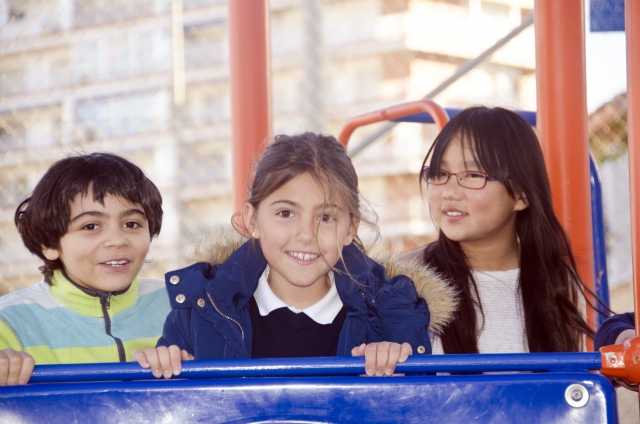
Elementary School Moral Education Grade 1 and Grade 2
“To get along with friends and help each other”
Elementary School Moral Education Grade 3 and Grade 4
“To understand, trust and help each other”
Elementary School Moral Education Grade 5 and Grade 6
“To trust friends and learn each other, deepen friendship, and build human relationship understanding men and women each other”
Lower Secondary School Moral Education
“To have faithful friends, understanding the greatness of friendship and to encourage and enhance each other” “To deepen the understanding of men and women each other and to deepen human relations, experiencing problems and conflicts”
The experiential learning activities in the friend field are considered as follows;
(1) To make friends at schools, or to make friends in playing with neighborhood children in the park
(2) To make friends, by participating in an activity organized by a youth organization, a sports club, a cultural circle, a volunteer group, or an international exchange group
Annual Events

Elementary School Special Activity, School Event, Ceremony
“To carry out activities which give meaningful changes and milestones to school life, and give solemn and fresh moods to the development of a new life”
(Description) “The ceremony is an educational activity held by all the children and faculty members at the school, and the contents include the entrance ceremony, the graduation ceremony, the opening ceremony, the closing ceremony, the ceremony to commemorate the opening of the school, the welcome ceremony of the new faculty members, the farewell ceremony of the faculty members, the ceremony to meet new pupils and the morning meeting.”
Lower Secondary School Special Activity, School Event, Ceremony
“To carry out activities which give meaningful changes and milestones to school life, and give solemn and fresh moods to the development of a new life”
(Description) “The ceremony is an educational activity held by all the students and faculty members at the school, and the contents include the entrance ceremony, the graduation ceremony, the opening ceremony, the closing ceremony, the coming-of-age ceremony for middle school students, the ceremony to commemorate the opening of the school, the welcome ceremony, and the farewell ceremony.”
The experiential learning activities in the annual events field are considered as follows;
To carry out annual events
For example, New Year's Day, New Year's visit to a Shinto shrine, pounding rice‐cakes, the Festival of Seven Herbs, the cutting of New Year's rice-cakes, the day before the calendrical beginning of spring, the Girls' Festival, the equinoctial week, cherry blossom viewing, the Boys' Festival, the Festival of the Weaver, Obon Festival (an annual Buddhist event for commemorating one's ancestors), moon viewing, Japanese traditional event for children aged 7, 5 and 3 years old, Christmas, the buckwheat noodles eaten on New Year's Eve, and birthday parties
Cultural Activity
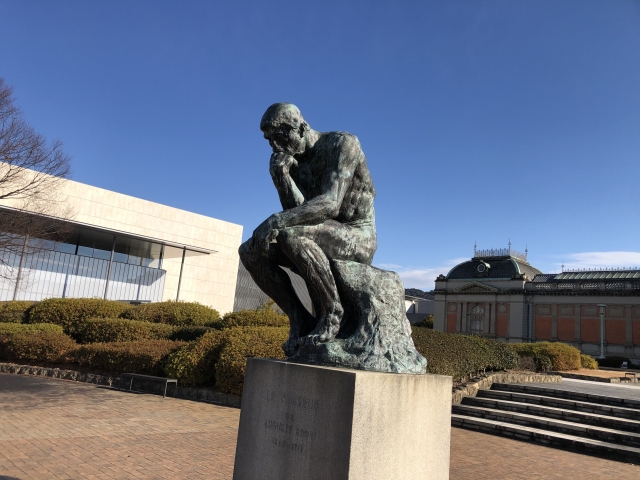
Elementary School Special Activity, School Event, Cultural Activity
“To carry out activities which present the results of usual learning activities, increase the motivation of the improvement and become familiar with culture and art”
(Description) “In the cultural events, there are events in which children comprehensively develop, announce and appreciate each other the results of everyday learning, and there are events in which children appreciate the works and events which children didn't make. The former includes the arts festival, the presentations of learning result, the exhibition, the concert, the reading presentation, and the club presentation. The latter includes the appreciation event of music, theater, museum, local traditional culture, etc.”
Lower Secondary School Special Activity, School Event, Cultural Activity
“To carry out activities which present the results of usual learning activities, increase the motivation of the improvement and become familiar with culture and art”
(Description) “In the cultural events, there are events in which students comprehensively develop, announce and appreciate each other the results of everyday learning, and there are events in which students appreciate the works and events which students didn't make. The former includes the cultural festival (the arts festival), the presentations of learning result, the concert (the chorus festival), the exhibition. The latter includes the appreciation events of music, film, theater, local traditional culture, lecture, etc.”
The experiential learning activities in the cultural activity field are considered as follows;
(1) To go to an art museum, a gallery, a movie theater, a concert hall, a culture center, a theater, etc. and appreciate paintings, calligraphies, photographs, movies, music, drama, Nihon-buyo (classical Japanese dance), musical, ballet, and flower arrangement
(2) To learn to play the piano, violin, etc. in a music class, learn ballet in a ballet class, learn how to dance in a dance class, learn painting in a painting class, then to play or display at the recital or the exhibition
Excursion, Travel, Group Accommodation Activity

Elementary School Special Activity, School Event, Excursion and Group Accommodation Activity
“In the living environment which is different from usual, such as group accommodation activities in nature, to spread the knowledge and become familiar with nature and culture, and to enable to carry out activities which can accumulate experience such as the way of communal living like building better human relations, and the public morality”
(Description) “Excursion and group accommodation activity includes the excursion, the school trip, the outdoor activity, and the group accommodation activity”
Lower Secondary School Special Activity, School Event, Excursion and Group Accommodation Activity
“In the living environment which is different from usual, to spread the knowledge and become familiar with nature and culture, and to enable to carry out activities which can accumulate experience such as the way of communal living like building better human relations, and the public morality”
(Description) “Excursion and group accommodation activity includes the school trip, the field trip, the group accommodation activity, and the outdoor activity.”
The experiential learning activities in the excursion, travel, group accommodation activity field are considered as follows;
To enjoy climbing, hiking, playing with field athletics, a campfire, see bathing, clam digging, fishing, playing in a river, canoeing, snorkeling, outdoor cooking such as curry and rice, and barbeque, cycling, skiing, playing on a sled, camping, and traveling
Volunteer Activity
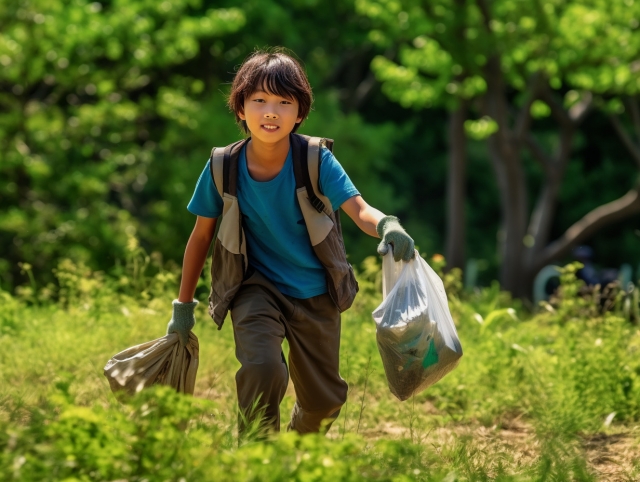
Elementary School Special Activity, School Event, Labor Productivity Event and Volunteer Event
“To acquire the value of the work and the pleasure of production, and to carry out activities to get experience to cultivate the spirit of social services such as volunteer activities”
(Description) “Labor productivity event and volunteer event includes the breeding and cultivation activity, the school beautification activity, the cleanup activity in local community and public facilities, and the interaction with welfare facilities.”
Lower Secondary School Special Activity, School Event, Labor Productivity Event and Volunteer Event
“To acquire the value of the work and the pleasure of production, and to acquire the educational experiences related to the view of profession and career such as workplace experience” “To acquire the pleasure of helping and living together, and to carry out activities in order to get experience to cultivate the spirit of social services such as volunteer activities”
(Description) “Labor productivity event and volunteer event include the workplace experience activity, various production activities, the visit of the upper school or workplace, the whole school beautification activity, the cooperation with the local community, and the volunteer activities inside and outside of the school”
The experiential activities in the volunteer activity field are considered as follows;
To participate in volunteer activities such as cleanup activities, taking care of flower beds, helping the festival, animal welfare activities, disaster prevention activities, reconstruction support activities, or exchange activities at welfare facilities
Computer

Elementary School General Provisions
“In each school, the environment necessary to utilize information means such as computers and information communication networks should be prepared, and the substantiality of learning activities using them appropriately should be attempted. Moreover, appropriate utilization of various statistical materials, newspapers, audio-visual materials and educational materials and teaching materials should be made. In addition, the following learning activities should be planned systematically according to the characteristics of each subject;
(a) Learning activities for learning basic operation of information means necessary for learning such as entering characters by a computer
(b) Learning activity to acquire the logic thinking necessary for the pupil to experience programming and to perform the intended processing on the computer
Lower Secondary School General Provisions
“In each school, the environment necessary to utilize information means such as computers and information communication networks should be prepared, and the substantiality of learning activities using them appropriately should be attempted. Moreover, appropriate utilization of various statistical materials, newspapers, audio-visual materials and educational materials and teaching materials should be made.“
The experiential learning activities in the computer field are considered as follows;
To collect information and disseminate information appropriately by using a personal computer or a smartphone, in particular, to use social media appropriately
Other Experiential Learning Activities
The experiential activities in the other field are considered as follows;
(1) To go to a science museum, the museum of emerging science and innovation, a marine museum, a space science museum, and a science and technology museum
(2) To participate in a mathematical contest, and a science contest
(3) To take an English proficiency test, a kanji (Chinese character) aptitude test, and a mathematics proficiency test
(4) To go to a cram school, an abacus school, a calligraphy school, a science experiment class, an English conversation class, and a personal computer class
The current status of experiential learning activities for children of elementary and lower secondary school
Compared to the past, it is said that the experience of children is insufficient. In regard to this, National Institution for Youth Education of Japan invested what kind of experiences the children of elementary and lower secondary school have, in the survey of experimental learning activities of children in 2014.
Natural experiences
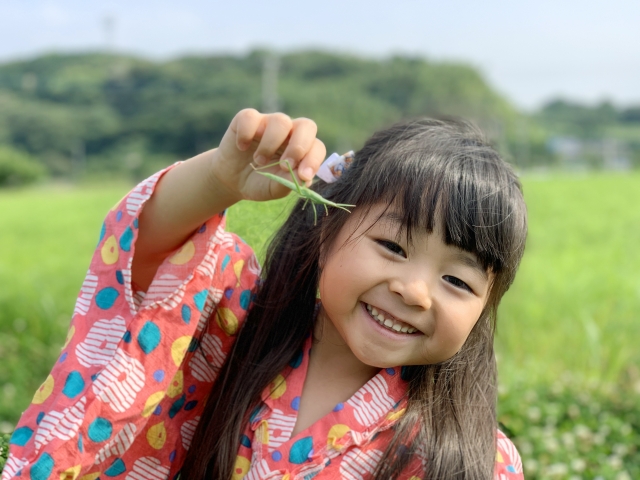
Catching insects such as butterflies, dragonflies, and grasshoppers (Elementary and lower secondary school students did it “many times” and “a little” 81.0% in 1998, 59.3% in 2009, 78.3% in 2014)
Clamming or fishing in a sea or a river (They did it “many times” and “a little” 78.4% in 1998, 58.0% in 2009, 74.9% in 2014)
Climbing a large tree (They did it “many times” and “a little” 56.8% in 1998, 47.6% in 2009, 60.0% in 2014)
Climbing high mountains without using a ropeway or a lift (They did it “many times” and “a little” 47.2% in 1998, 33.2% in 2009, 42.0% in 2014)
Seeing the sun rising and sinking (They did it “many times” and “a little” 66.6% in 1998, 62.5% in 2009, 67.6% in 2014)
Looking at the stars which are spread all over the night sky and shining (They did it “many times” and “a little” 77.9% in 1998, 74.0% in 2009, 82.0% in 2014)
Seeing wild birds and hearing their voice (They did it “many times” and “a little” 74.9% in 1998, 66.6% in 2009, 79.1% in 2014)
Swimming in a sea or a river (They did it “many times” and “a little” 90.2% in 1998, 69.8% in 2009, 83.7% in 2014)
Camping (They did it “many times” and “a little” 62.1% in 1998, 43.3% in 2009, 56.1% in 2014)
Experiences in actual life

Peeling the skin of fruits or cutting vegetables with knife (Elementary and lower secondary school students did it “many times” and “a little” 87.4% in 1998, 89.8% in 2009, 90.6% in 2014)
Wringing a towel or a floor cloth (They did it “many times” and “a little” 96.4% in 1998, 96.3% in 2009, 98.7% in 2014)
Picking up trash which was dumped in a road or in a park (They did it “many times” and “a little” 63.4% in 1998, 61.7% in 2009, 69.8% in 2014)
Putting a stop to bullying the weak or fighting, and cautioning (They did it “many times” and “a little” 62.3% in 1998, 58.5% in 2009, 68.5% in 2014)
Changing a baby’s diaper or giving milk (They did it “many times” and “a little” 22.6% in 1998, 24.6% in 2009, 30.4% in 2014)
Piggybacking a little child or playing with (They did it “many times” and “a little” 79.8% in 1998, 77.6% in 2009, 85.5% in 2014)
Helping with the housework

Shopping as housework (Elementary and lower secondary school students do it “always” and “sometimes” 56.5% in 1998, 69.9% in 2009, 76.5% in 2014)
Bringing the newspaper or mail (They do it “always” and “sometimes” 58.8% in 1998, 65.5% in 2009, 63.3% in 2014)
Arranging or polishing shoes (They do it “always” and “sometimes” 25.2% in 1998, 43.7% in 2009, 50.5% in 2014)
Arranging or cleaning dishes (They do it “always” and “sometimes” 62.8% in 1998, 73.3% in 2009, 74.7% in 2014)
Helping cleaning and tidying up in the house (They do it “always” and “sometimes” 51.2% in 1998, 64.3% in 2009, 68.0% in 2014)
Putting out a garbage bag (They do it “always” and “sometimes” 38.0% in 1998, 51.7% in 2009, 58.5% in 2014)
Washing the bath or helping to clean up windows (They do it “always” and “sometimes” 50.2% in 1998, 59.0% in 2009, 63.5% in 2014)
Cooking for family (They do it “always” and “sometimes” 50.5% in 1998, 60.6% in 2009, 63.4% in 2014)
Taking care of a pet or watering plants (They do it “always” and “sometimes” 54.1% in 1998, 44.9% in 2009, 45.6% in 2014)
Daily habits

In the morning, washing face or brushing teeth (Elementary and lower secondary school students do it “always” and “generally” 92.2% in 1998, 94.6% in 2009, 94.3% in 2014)
Having breakfast (They do it “always” and “generally” 94.5% in 1998, 95.3% in 2009, 96.1% in 2014)
Laying out and putting away the bedding or making the bed (They do it “always” and “generally” 44.4% in 1998, 58.8% in 2009, 61.1% in 2014)
Waking up by yourself without being awakened in the morning (They do it “always” and “generally” 51.7% in 1998, 52.3% in 2009, 56.1% in 2014)
Greeting at home (They do it “always” and “generally” 85.2% in 1998, 87.4% in 2009, 89.2% in 2014)
Greeting neighbors or acquaintances (They do it “always” and “generally” 78.7% in 1998, 83.1% in 2009, 86.4% in 2014)
It is clear that the number of experiences in nature, in actual life, etc. is gradually increasing as compared to a few years ago. However, for example, there are many adults who have the impression that natural experiences, etc. have decreased compared to the Showa period(1926-1989).
Considering a burden of respondents, the question item number cannot be too much. For this reason, there is a possibility that there are not many experiential learning activities other than items that are in that survey items.
It is considered that the experiences which elementary and lower secondary school students should have are changing and it is not simple to say that they should do all the activities which have been done in the past. For example, there used to be no personal computer, no internet. Moreover elementary school pupils did not learn English. Since the time which children could freely use is limited, the question of what are the experiential learning activities suited to modern needs to be considered as well.
While there are relatively easily experiential learning activities such as “playing tag with friends,” there are experiential learning activities which requires a large cost burden, such as "Looking at the Mona Lisa at the Louvre Museum in France."
The experiential learning activities which many children have experienced from long ago are considered to be relatively easy experiential learning activities. Therefore, it is assumed that, first, these experiential learning activities should be encouraged, then, experiential learning activities which based on the interests of each child and the home environment should be encouraged.
Experiential Learning Activity Map
Based on Course of Studies for Schools, etc. including various experiential learning activities, such as described in Chapter 2, the entire image systematically and comprehensively is shown in Attachment 1, “Bird's-eye view of the experiential learning activities for elementary and lower secondary school students.”
Based on “Bird's-eye view of the experiential learning activities for elementary and lower secondary school students,” taking into account the economic burden, etc. as described in Chapter 3, experiential learning activities to encourage children to do is shown in Attachment 2, “Experiential learning activity map for elementary and lower secondary school students.”
The experiential learning activity map should be revised to better, by encouraging children’s experiential learning activities, in reference to the experiential learning activity map at home, in the community, or in youth education facilities, and then by being based on the responses of children, parents, etc. It is not necessary for elementary and lower secondary school students to do all the experiential learning activities described in the map, for example, it is not necessary to find and observe all insects listed, It should be considered as a guide.
The above sentences are the personal opinions of the author, and it is not necessarily representative of the opinion of the organization to which the author belongs.
References
Ministry of Education, Culture, Sports, Science and Technology (MEXT) (2017), Shogakko Gakushu Shido Yoryo (Courses of Study for Elementary Schools), Tokyo, from
http://www.mext.go.jp/component/a_menu/education/micro_detail/__icsFiles/afieldfile/2017/05/12/1384661_4_2.pdf
Ministry of Education, Culture, Sports, Science and Technology (MEXT) (2017), Shogakko Gakushu Shido Yoryo Kaisetsu Tokubetsu Katsudo Hen (Description of Courses of Study for Elementary Schools (Special Activities)), Tokyo, from
http://www.mext.go.jp/component/a_menu/education/micro_detail/__icsFiles/afieldfile/2017/10/19/1387017_15_2.pdf
Ministry of Education, Culture, Sports, Science and Technology (MEXT) (2017), Chugakko Gakusyu Shido Yoryo (Courses of Study for Lower Secondary Schools), Tokyo, from
http://www.mext.go.jp/component/a_menu/education/micro_detail/__icsFiles/afieldfile/2017/06/21/1384661_5.pdf
Ministry of Education, Culture, Sports, Science and Technology (MEXT) (2017), Chugakko Gakushu Shido Yoryo Kaisetsu Tokubetsu Katsudo Hen (Description of Courses of Study for Lower Secondary Schools (Special Activities)), Tokyo, from
http://www.mext.go.jp/component/a_menu/education/micro_detail/__icsFiles/afieldfile/2017/07/25/1387018_13_1.pdf
Ministry of Education, Culture, Sports, Science and Technology (MEXT), Shogakko Gakushu Shido Yoryo Eigoban Kariyaku (Courses of Study for Elementary Schools (Tentative Translation by MEXT)), from
http://www.mext.go.jp/a_menu/shotou/new-cs/youryou/eiyaku/1261037.htm
Ministry of Education, Culture, Sports, Science and Technology (MEXT), Chugakko Gakushu Shido Yoryo Eigoban Kariyaku (Courses of Study for Lower Secondary Schools (Tentative Translation by MEXT)), from
http://www.mext.go.jp/a_menu/shotou/new-cs/youryou/eiyaku/1298356.htm
Shirahata,Shiro (1996), Kara Kozan Syokubutsu (Color alpine plants), Tokyo, Tokyo Shinbun Publishing
Imaizumi, Tadaaki (2002), Gensyoku Waido Zukan Dobutsu (Picture Encyclopedia Mammals, Amphibians, Reptiles), Tokyo, Gakken
Okiyama, Muneo and Okutani, Takashi (2002), Gensyoku Waido Zukan Sakana, Kai (Picture Encyclopedia Fishes, Mulluscs), Tokyo, Gakken
Okajima, Shuji (2002), Gensyoku Waido Zukan Konchu 1 (Picture Encyclopedia Insects 1), Tokyo, Gakken
Okajima, Shuji (2002), Gensyoku Waido Zukan Konchu 2, Kumo (Picture Encyclopedia Insects 2, Spiders), Tokyo, Gakken
Takeda, Masatsune (2002), Gensyoku Waido Zukan Mizu no Seibutsu (Picture Encyclopedia Aquatic Invertebrate Animals), Tokyo, Gakken
Komiya, Teruyuki (2002), Gensyoku Waido Zukan Tori (Picture Encyclopedia Birds), Tokyo, Gakken
Sentani, Junichiro and Asayama, Eiichi (2002), Gensyoku Waido Zukan Hana. Sakumotsu (Picture Encyclopedia Garden Flowers, Garden Products), Tokyo, Gakken
Takahashi, Hideo and Honda, Shoji (2002), Gensyoku Waido Zukan Yaso (Picture Encyclopedia Wild Flowers), Tokyo, Gakken
Ooba, Tatsuyuki (2002), Gensyoku Waido Zukan Jumoku, Kajitsu (Picture Encyclopedia Trees, Fruits), Tokyo, Gakken
Fujii, Akira (1998), Seiza Tentai Kansatsu Zukan (Astronomical Observation Guide), Tokyo, Seibido Publishing
Agency for Cultural Affairs (2007), Oyako de Utai Tsugou Nihon no Uta Hyakusen (100 Japanese songs to be sung by parents and children), Tokyo, Tokyo Shoseki
National Institute for Youth Education (2016), Seishonen no Taikenkatsudo Tou ni Kansuru Jittai Chosa (Survey of Experimental Learning Activities of Children), Tokyo


